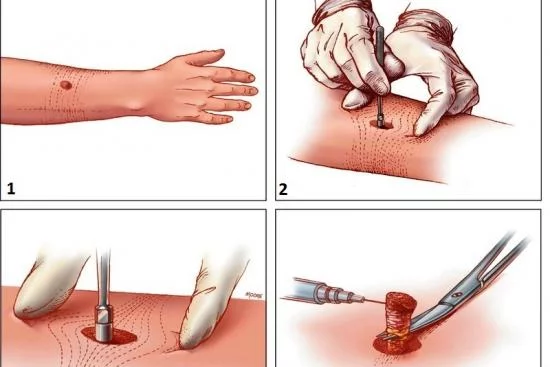With millions of cases recorded each year, skin cancer is one of the most common cancers in the world. A positive prognosis for patients depends on early discovery and treatment.
Cutaneous tumor excision in Turkey have proven to be among the most successful available surgeries in our partner clinics.
- For people with skin tumors, warts, cysts, pimples, and moles.
- Infection
- Bleeding
- Allergic reaction
- The intervention lasts between 20 minutes and 1 hour depending on the type of tumor
- 3 to 4 weeks.
- 90%
Post-surgical follow-up in Istanbul, Turkey: Prices and reviews
Regular checks with the dermatologist are necessary. The purpose of these visits is to examine the treated skin, retrieve the results of the pathological examination, and indicate a possible medical treatment in Istanbul, Turkey at an affordable price.
To request your personalized quote in one of our best clinics, you can send your medical file, and then you will receive the best offer prices from our partner hospitals in Istanbul, Izmir, Ankara & Antalya, Turkey.

Best Clinics with Verified Reviews

- Multispecialized hospital
- 7 operating rooms
- Capacity é of 170 beds

- Multispecialized hospital
- Hospital founded in 2007
- Very good reputation in ENT department
Cutaneous tumor excision: What is it?
Skin tumor removal is a medical procedure that involves the surgical removal of abnormal skin growths such as moles, cysts, and skin cancers. This procedure is important for both aesthetic and medical reasons. Not only does it improve the appearance of the skin, but it also eliminates the potential risks associated with malignant tumors.
Excision is a widely used and highly effective treatment for various skin tumors. These treatments are performed with precision and care to remove malignant tissue while preserving as much healthy, functional skin as possible. Patients should consult with their dermatologist or oncologist to determine the best treatment plan for their diagnosis and situation.
The primary goal of excisions is to completely remove cancerous tissue while minimizing damage to surrounding healthy skin.
The removed cutaneous tumor must be analyzed by a specialist in pathology. The purpose is to validate a suspected skin cancer diagnosis while defining the boundaries of healthy skin and then determining the appropriate therapeutic behavior.

What is the process of excisions of skin cancer?
Surgery to remove a skin tumor involves several essential steps:
Diagnostic evaluation
The journey begins with a thorough diagnosis. The skin lesion will be examined by a dermatologist or skin cancer specialist, who may also take a biopsy to determine whether cancer is present.
Planning a treatment strategy
A treatment strategy is created after the diagnosis is determined. To choose the best excision method, the lesion's size and location are carefully evaluated.
Administration of anesthesia
Local anesthetic is applied before, numbing the area and ensuring the patient's comfort throughout the treatment.
Tumor removal surgery
To guarantee that all cancer cells are removed, the surgeon removes the cancerous tissue along with a margin that is healthy skin. To ensure that the cancer has been eliminated, further testing is subsequently performed on the excised tissue.
Wound closure
To encourage healing and reduce scarring, the wound is closed using sutures, staples, or other closure techniques, depending on the extent and depth of the excision.

Potential Risks and Complications
Even though excisions of skin cancer are mostly painless and safe, there are a few possible risks and issues to be aware of:
- Scarring: Although attempts are made to reduce scarring, it is unavoidable that there will be some degree of scarring after surgery.
- Infection: Similar to every surgical procedure, there is a chance of infection at the surgical site. This risk can be controlled with good wound care.
- Although it's rare, bleeding can happen during or after surgery. In most cases, it can be managed with pressure or extra sutures.
- Nerve Damage: Depending on where the excision is made, there is a small chance of doing so, which could impair local sensation or movement.
How can I take care of myself?
You may need a family member or friend to help you with daily tasks until you feel better. It may take some time before your team tells you it's okay to return to normal activity.
Be sure to take prescribed medications as directed to prevent pain, infection, and/or constipation. Call your team for any new or worsening symptoms.
There are ways to manage constipation after surgery. You can change your diet, drink more fluids, and take over-the-counter medications. Before taking laxatives, check with your healthcare team.
Share this page







